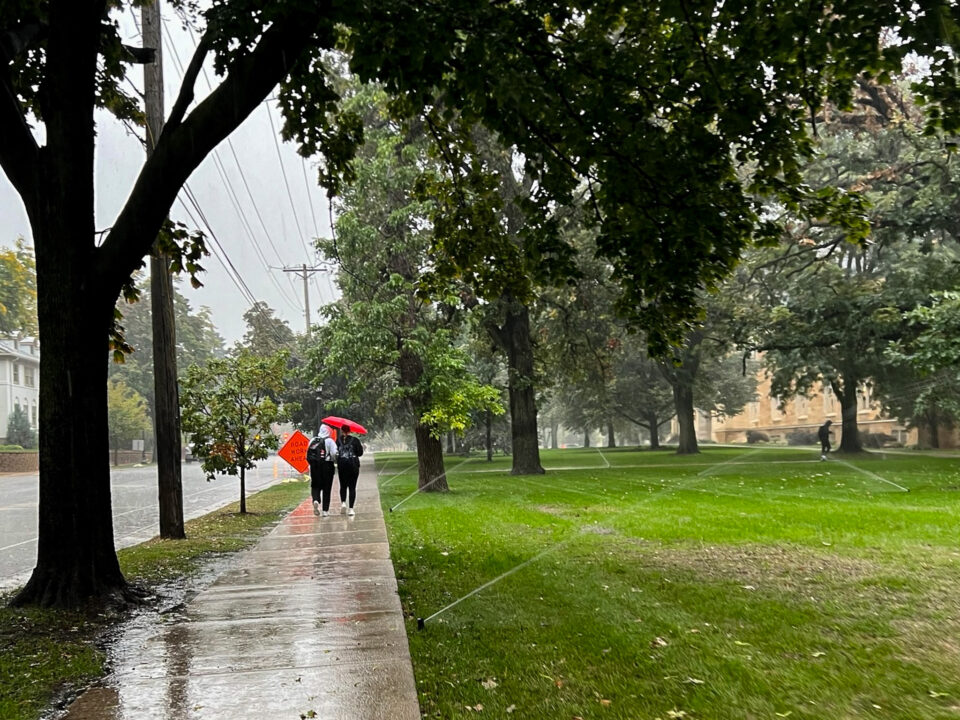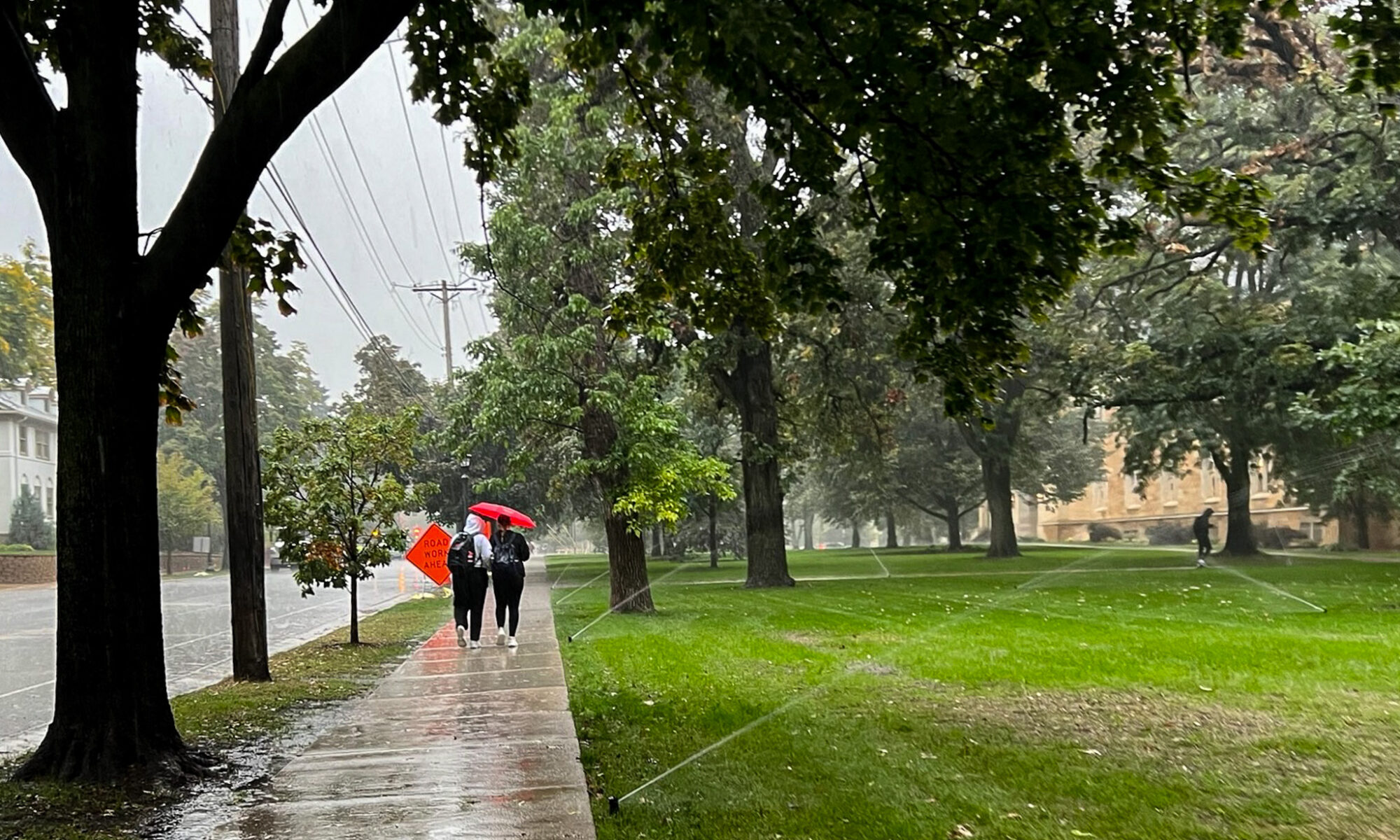
Students at the University of St. Thomas have noticed potentially unsustainable practices when it comes to watering vegetated land on campus. Sprinklers are running when it is raining, after it has rained, and water is spraying the campus’ sidewalks.
“I see the sprinklers on literally all the time when it is raining and on days when it has already rained,” sophomore Ryn Higgins said. “For a school that preaches so much about sustainability, the unsustainable practices are super hypocritical, and it is so frustrating.”
While the university has pledged to lessen its water consumption by 10% by the year 2024 in its five-year sustainability plan, students like Ryn Higgins wonder if the campus’ irrigation system might hinder the university’s plan.
Nick Scallon, St. Thomas’ grounds supervisor, said the irrigation system would not be a roadblock in reducing the campus’ water usage as the university is actively replacing old systems.
“The new areas, like for STEAM, are all high tech, high end, and efficient spray heads, and strip lines,” Scallon said. “We also have invested in this program called IQ4, which is a global satellite positioning, so we can turn the system on and off from anywhere in the world.”
Scallon said St. Thomas’ sprinkler systems have the capability to adjust water levels given the humidity and water needed in the soil.
“What the program does is it takes in the local reading, so if it is really humid, we don’t really need to water as much soil. We’ll take those numbers in, and it may drop the program from 15 down to 10 minutes, or if we’re really dry, it may increase it to give what we need for exact moisture readings” Scallon said.
While the system is advanced in reading the soil’s humidity levels, Scallon said there is a one-day delay in watering the grass after obtaining these levels, which explains why students may see the sprinklers on during rainy weather.
“It doesn’t do on the spot, so you’ll get the reading from Monday. It’ll apply to Tuesday,” Scallon said.
The delay in the application of the evapotranspiration readings, however, does not explain why the sprinklers overshoot onto the sidewalks. Scallon said that the overshoot is needed.
“We need to have a little overlap on sidewalks because in the hottest areas, the heat gets concentrated on the concrete, and if we don’t have a little bit of cooling on that concrete, they’ll burn out the edges of the turf,” Scallon said. “Sometimes they do get out of adjustment and go a little farther, so we try to monitor that, but we do need a little bit of overlap.”
Rachel Schauer, the program manager at the Office of Sustainability, says students interested in living more sustainably should refer to the University of St. Thomas’ 2023-2024 “Guide to Sustainable Living,” which holds information about waste reduction, energy and water conservation and more.
She also says it is beneficial to recognize that we are a part of a bigger system.
“I think it is really important that each individual knows that they have an impact in addition to the things that we could do on a broader operations scale,” Schauer said. “From behind the scenes, facilities and all of us do our best to make sure that we are only taking what we need, but at the same time as individuals, we have that same impact on campus.”
Cecilia Wallace can be reached at wall1238@stthomas.edu.


Ryn Higgins sounds like a huge dork. He thinks they should adjust the sprinkler system every time it rains a bit? He also needs to learn what “literally” means. Sorry the “unsustainable practices are super hypocritical, and it is so frustrating.” Grow up, my dude.